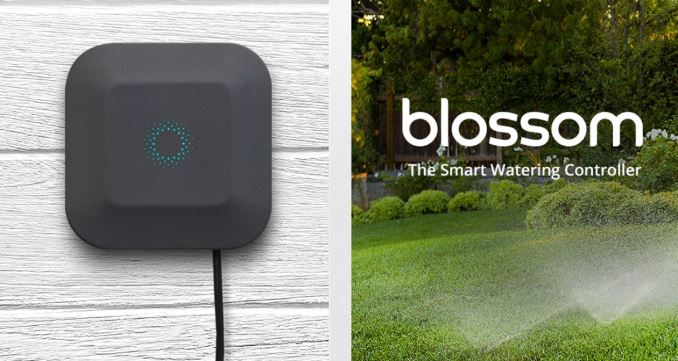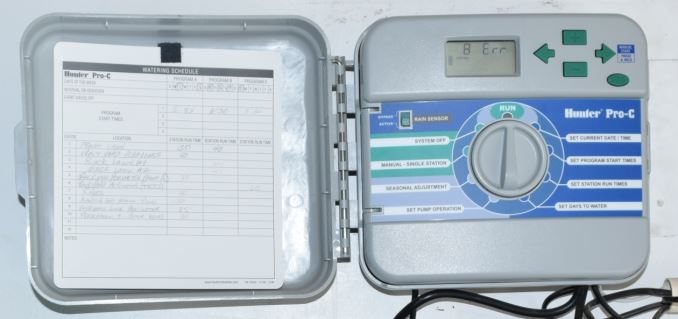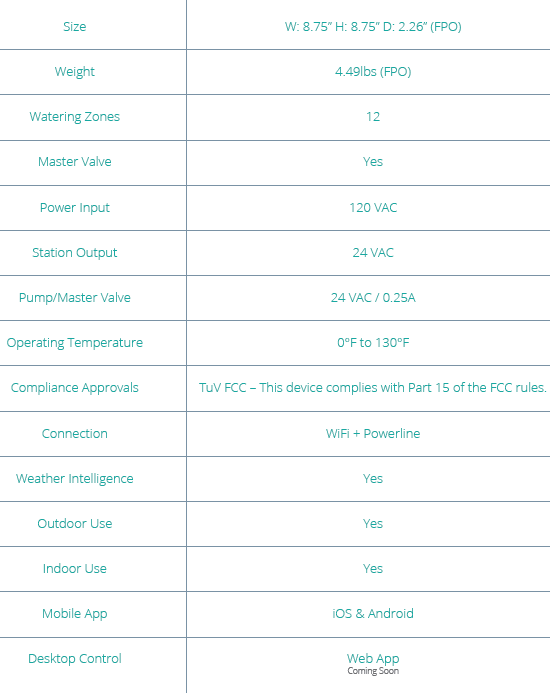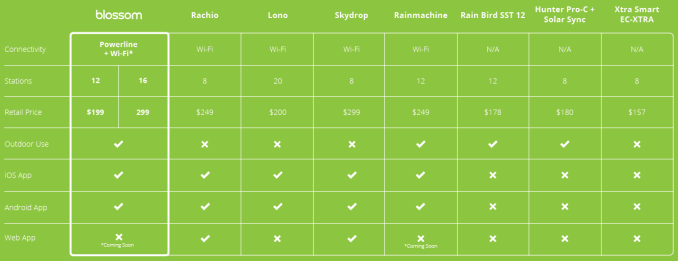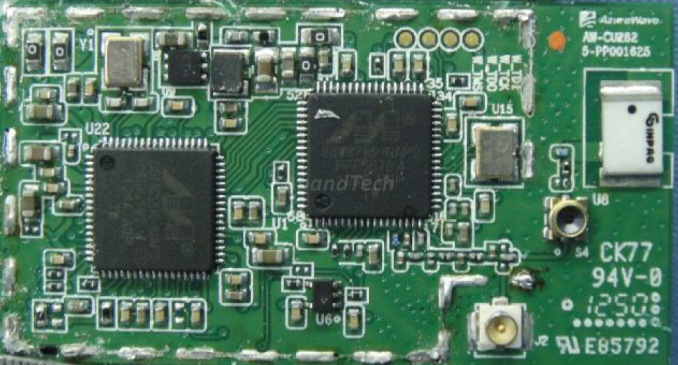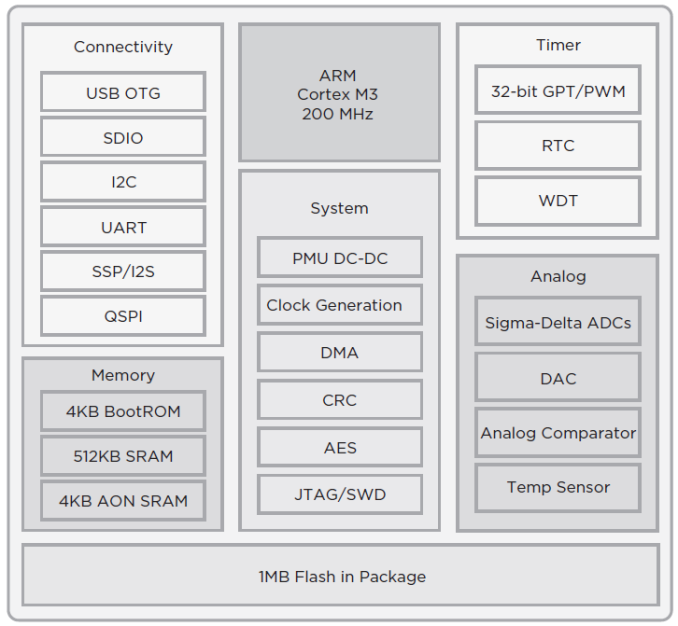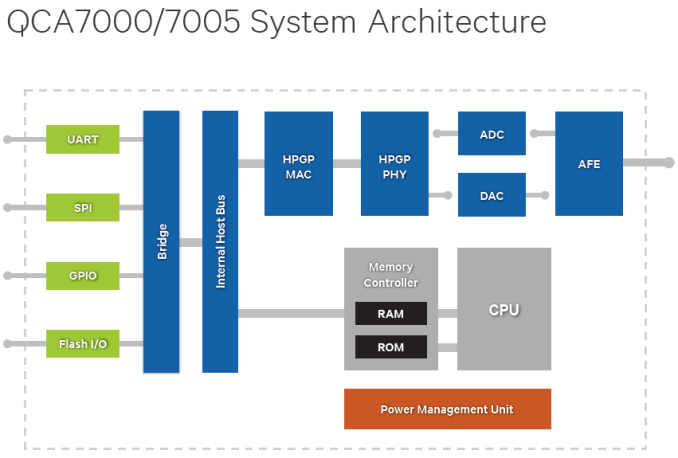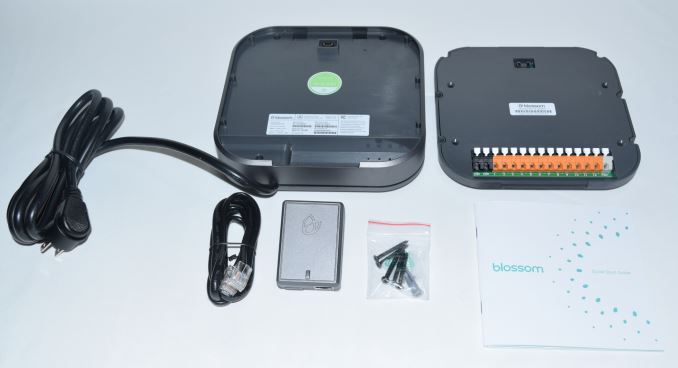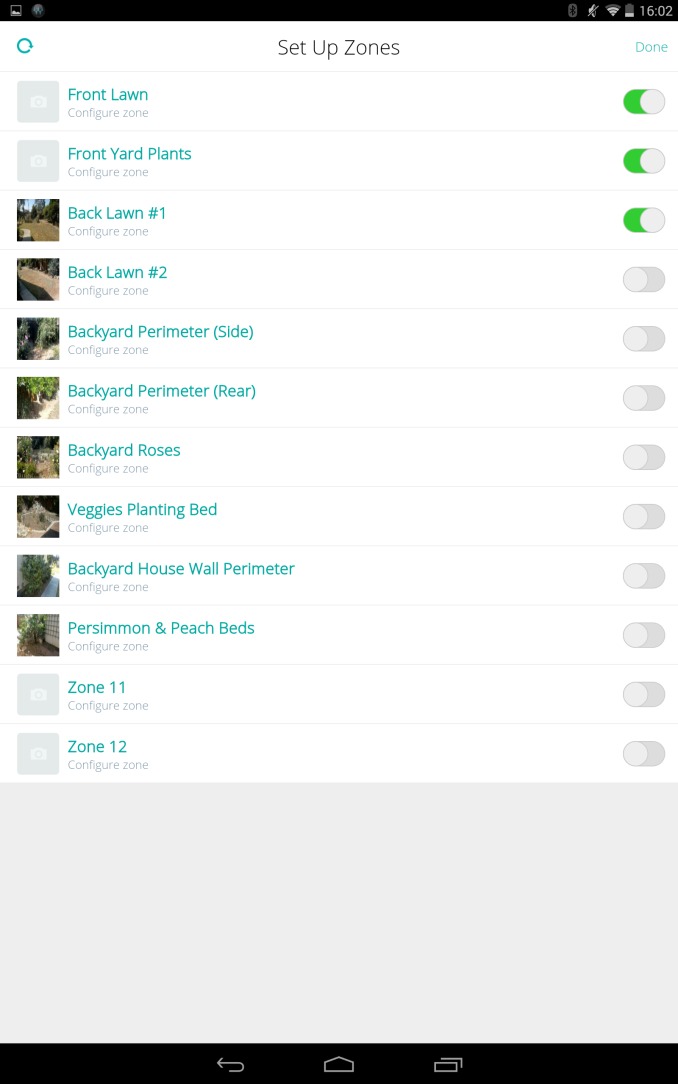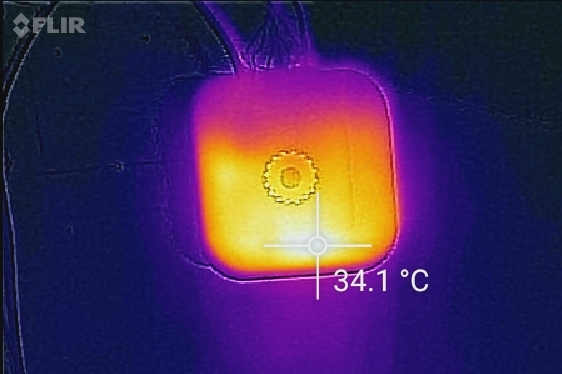
Original Link: https://www.anandtech.com/show/9565/blossom-smart-watering-controller-review
Blossom Smart Watering Controller Review
by Ganesh T S on August 28, 2015 8:10 AM EST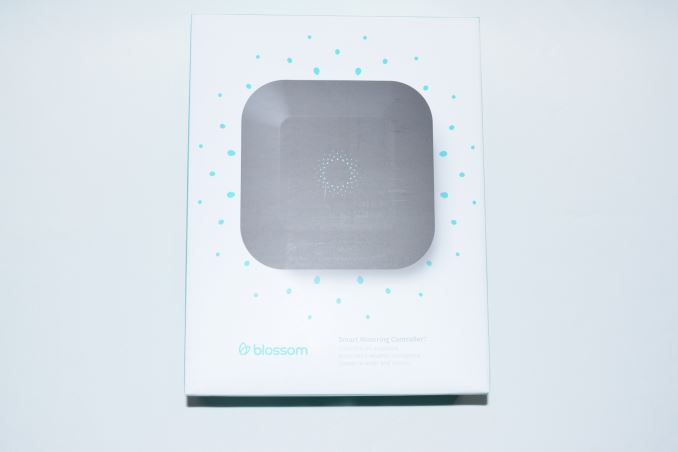
Introduction and Component Analysis
Home automation has garnered renewed attention, thanks to the Internet of Things (IoT) revolution. Many vendors targeting this market look to deliver solutions for aspects appealing to a broader audience. Some examples include lighting, temperature control, security using IP cameras etc. Irrigation control is a niche within the home automation niche. At first glance, it appears to be a limited market, as only those with gardens big enough to require scheduled / automated watering of multiple zones might need it. Surprisingly, there are many options for people looking to gain IP control over their irrigation / watering system's functioning. iConservo's Blossom is one such option. It is one of the very few crowd-funding projects that actually managed to ship on schedule.
An irrigation system in the typical US home takes water from the main line through a backflow prevention device and supplies it to one or more sprinkler valves. These sprinkler valves can be controlled using low voltage (typically 24V) electrical current from an irrigation controller. Traditional irrigation controllers (i.e, those designed prior to the smartphone age) rely on a complex interface to set up the schedule. For example, the 'programming interface' for the Hunter Pro-C (which was replaced by the Blossom Smart Watering Controller in our review setup) is shown below. Operation without going through a manual at least once is quite difficult.
The Hunter Pro-C that was replaced by the Blossom Smart Watering Controller
The sets of sprinkler(s) connected to the valve(s) that can be turned on with the same signal constitute an irrigation zone. The irrigation controller is the brains behind the whole irrigation system, as it handles the scheduling related to the activation and deactivation of each zone. Controllers are marketed based on the number of zones they can support. While the sprinklers and valves may be spread all over the garden, consumers usually opt to keep the controller in the garage (since it needs to be near a power outlet)
The technical specifications of the Blossom Smart Watering Controller, as provided in their marketing collateral, is reproduced below.
There are a number of popular irrigation controllers in the market. Blossom tries to differentiate itself with a unique set of features that don't seem to be present together in any other offering. These include:
- IP54 rating for outdoor installation (high level of protection against particles and a fair amount of protection against water)
- Communication via either Wi-Fi or powerline (useful in the case that the unit is mounted out of reach of a stable and strong Wi-Fi signal)
- Automated weather intelligence via the cloud (for example, scheduled watering could be turned off in the case of rainfall)
Blossom's marketing collateral also provides a handy comparison table that has been reproduced (with slight modifications) below.
Blossom claims to have a web app (marked 'Coming Soon') in their version of the above table. I have taken the liberty to alter it as control via a web browser is not currently available.
Designing a network-connected irrigation controller to operate on a schedule is not rocket science (from a hardware viewpoint). Consumers familiar with microcontrollers and relays may find a DIY solution to be more exciting. Based on FCC filings and a press release, we determined that the Blossom uses the following hardware:
- AzureWave AW-CU282 Wi-Fi SoC module
- Qualcomm Atheros QCA7000 HomePlug powerline communication IC
The AzureWave Aw-CU282 Wi-Fi SoC solution targeting the IoT market consists of the Marvell 88MC200 microcontroller and a Marvell 88W8792 1x1:1 802.11abgn Wi-Fi chip. The microcontroller integrates a 200 MHz Cortex-M3 core and 1MB of flash memory. It also supports up to 63 GPIOs (general-purpose IOs), and this comes in handy when attempting to interface with the electrical relays on the board.
The Qualcomm Atheros QCA7000 is compliant with HomePlug Green PHY specifications and comes with an integrated AFE (analog front end), making it suitable for energy management / home automation purposes. Transfer rates are of the order of 4 - 10 Mbps, but, Blossom doesn't need much bandwidth (only the schedules need to be set).
The low power nature of all the components in the unit ensures that this always-on device is a green one.
Setup and Usage Impressions
The Blossom Smart Watering Controller comes neatly packaged with the main unit in two parts. The top plate with the power cord includes the 110V to 24V AC transformer as well as the powerline communication chip. The logic board wall base sports the connectors for the wires coming from the valves of each irrigation zone. Note that there are two 'COM' (common) ports and a 'PSR' (Pump Start Relay) port. Some setups (such as the one used for this review) don't need the PSR port at all. Other package components include the powerline adapter and an Ethernet wire (for connection to a power outlet near the router), screws and drywall anchors, as well as a quick start guide. A set of labels is also provided to paste on to the wires in order to identify the zone to which each of them belongs.
The installation process is as simple as removing the connectors from the old irrigation controller (taking out the associated wall wart and other miscellaneous sensors in the process), dropping in the four drywall anchors, screwing in the wall base and reconnecting the old connectors and affixing the top plate. The whole process was done in less than 15 minutes. The gallery below presents some 'before' and 'after' pictures.
Following the installation process, we have the software setup that needs to be done via the mobile app. We used the Android version for this purpose. An e-mail address is necessary to create an account on Blossom's website. Users with multiple Blossom units will need to go with distinct e-mail addresses, as there is currently no way to associate multiple Blossom units with the same account (acceptable, since this is a rare use-case). After activating the account, the app attempts to recognize the address for which the unit is getting configured. Once the correct address is chosen, the app attempts to connect to the Blossom unit via the powerline bridge. In our case, we had left that unconnected. The next step was to connect the mobile device to an ad-hoc Wi-Fi network created by the unit. This allows the Blossom unit to be configured with the password for the Wi-Fi network to get access to the Internet.
Once the connection with the Blossom servers are established, a pairing code needs to be entered into the app to associate the particular unit with the account created before. After this process, we proceed to the configuration of various zones. The first interface presents a way to completely turn off certain zones, if needed. Each zone can be set up with a particular name and a camera icon allows for photos to be taken and associated with that particular zone. A 'Test' button ensures that the Blossom unit sends a signal to turn on the sprinklers. This can be used to quickly rule out wiring issues.
Adjustable aspects of each zone in the setup process include:
- Smart Watering (allows Blossom to decide how long to keep the zone on based on various factors)
- Water amount
- Plant type (shrubs, flower beds, grass, trees, succulents)
- Emitter type (sprinklers, bubblers, drip, rotor - different emitters have different flow rates)
- Rainfall exposure (on or off)
The schedule can also be adjusted after all the zones are set up. Configurable parameters include the days on which each zone can be active as well as the time at which the irrigation controller can start the watering process.
My city currently has a watering restriction in place. Operation is allowed only two days a week, and the days are allotted based on the house number. In addition, watering between 8 AM and 8 PM is not allowed. It was easy to set up the Blossom unit to obey these restrictions. I let the unit work its magic uninterrupted. Owing to the drought conditions in our area, I had been manually watering the garden on and off since the middle of last year. After the Blossom unit was put in operation, the garden is showing better signs of life. My water bill is a wee bit higher than before, but nothing outrageous.
I logged into the app recently (after a few months) and was surprised to find an alert about a malfunctioning zone (an email would have surely helped here, given the cloud connection). The new app version also shows the next scheduled cycle and the last completed cycle. The Smart Watering option allows for adjustment of the watering duration decided upon by the unit.
Blossom sets the watering duration in an opaque manner (though it is possible to configure after the process is done). It would be nice if users were to get an email with the detailed schedule / watering durations once the unit gets configured by the intelligence in the cloud.
Miscellaneous Aspects and Concluding Remarks
Power consumption is an important aspect of home automation equipment. We hooked up the Blossom Smart Watering Controller to a Kill-a-Watt meter and recorded 4.3W as the power consumption at the wall during operation. The unit itself gets a little warm to touch, but nothing too worrisome, as the thermal photograph below shows. When the zones are in operation, there is an audible whine from the unit. Given that the unit is going to either be installed in a garage or outdoors, it is not much of an issue.
The following table summarizes the various home automation aspects / consumer checklist for the Blossom Smart Watering Controller and how it compares with the other systems that we have evaluated before.
| Home Automation Device Aspects - Summary Table | ||
| Aspect | ||
| Evaluated Devices | Blossom Irrigation Controller | mPower mPower Pro InWall Outlet InWall Dimmer Switch |
| Communication Technology | Wi-Fi (2.4 GHz) Powerline Communication (PLC) |
Wi-Fi (2.4 GHz) |
| Platform | Marvell 88MC200 MCU Marvell Avastar 88W8782 1x1 802.11n Wi-Fi SoC Qualcomm Atheros QCA7000 HomePlug Green PHY PLC |
Qualcomm Atheros AR9331 1x1 802.11n Wi-Fi SoC Host CPU: MIPS 24Kc, DRAM: 32MB |
| Power Source | AC Powered | AC Powered |
| Hub / Bridge Requirement | No | No |
| Control Center | Cloud (for setup and configuration) Local Device (stores backup schedule) |
Local Device (basic access, rules and scenes) Local Server (comprehensive access, rules and scenes) |
| User Control Interface | Mobile Apps | Web Browser Mobile Apps (basic control) |
| Open APIs | None | Yes (uPnP, HTTP, SSH) |
| Third-party / Hub Compatibility | None | None advertised |
| Cloud Reliance | Optional (compulsory only for initial setup and configuration) | None |
| Security Notes | Username / Password authentication at app level | Username / Password Authentication LAN Access Only |
| User Support / Discussion Forums | Blossom on Twitter | Ubiquiti Networks Community - mFi Forums |
| Street Price | USD 199 | USD 60 (mPower) USD 95 (mPower Pro) USD 59 (InWall Outlet) USD 59 (InWall Switch / Dimmer) |
Coming to the business end of the review, we have to say that Blossom has managed to bring out a unique home automation device. In our opinion, the inclusion of powerline communication (PLC) as an alternative path to the network in case Wi-Fi is not up to the task is a very good decision. This is something other home automation device manufacturers need to evaluate. In our opinion, consumer IP cameras (which rely on Wi-Fi right now) can also benefit from this dual approach. The IP54 rating allows users to install the unit wherever they see fit. The cloud-based 'Xona' intelligence seems to be effective in altering pre-set schedules based on weather conditions. We see no issues with the unique points set marketed by Blossom. There are multiple options in the market for automated gardening, and Blossom manages to stand out in the crowd.
Our main issue is with the cloud reliance aspect. While the Blossom does have a fail-safe schedule to fall back upon in case the Internet connection goes down, there is really no way to alter the schedule without going through the cloud. One of the main benefits of having smartphone control for the irrigation controller is the ability to turn a zone on or off immediately, even during operation. In the case of the Internet or Blossom's servers being down, this is simply not possible right now. Fortunately, Blossom recognizes the need for users to be able to configure the unit locally. I have heard that local browser access and control over the schedule is definitely in the roadmap. Till this feature comes about, we will not be able to recommend the Blossom Smart Watering Controller without reservation. To a lesser extent, we are also not comfortable with some alerts not being sent to the e-mail address associated with the unit. E-mail could also be used to inform the user about updates to the smart watering schedules.
Users not paranoid about being reliant on the cloud will find the Blossom Smart Watering Controller to be a great way to add automation to their irrigation needs. Ease of setup, usage and the 'it just works' aspects are the positives. We hope that Blossom will address the open APIs and local control capabilities as soon as possible.

